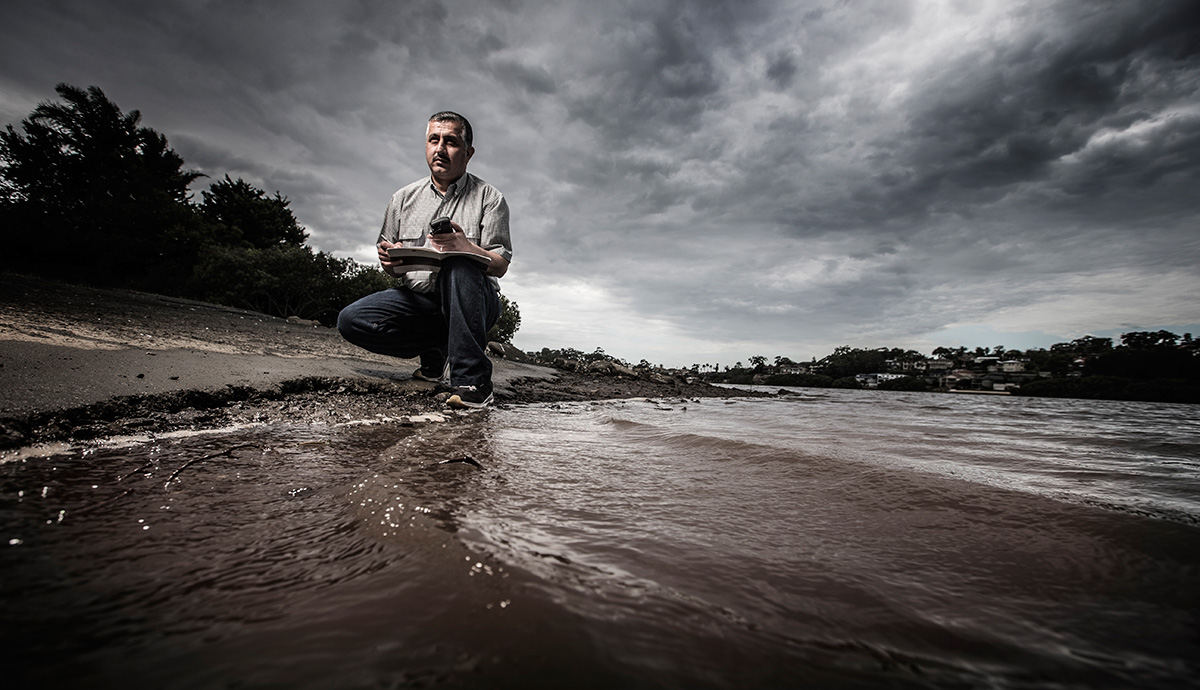March 11, 2015
Study reveals high levels of sediment pollution in Sydney’s Oyster Bay
Study reveals one of southern Sydney’s most expensive waterfront suburbs is harbouring trace metals.

The first comprehensive study in almost 20 years to investigate sediment pollution in the Georges River and Port Hacking has revealed one of southern Sydney’s most expensive waterfront suburbs is harbouring excessive levels of trace metals.
The study, conducted by environmental scientist Yasir Al Yazichi (pictured above) from UOW and recently published in the Bulletin of Environmental Contamination and Toxicology, found the deeper pockets of Oyster Bay were “highly polluted” with heavy metals such as chromium, nickel, lead, zinc, copper and arsenic. The research showed the levels of sediment pollution were slightly increased compared to the last study in 1996 (which was small comparison).
Yasir, a PhD student from UOW’s School of Earth & Environmental Sciences, said such a high degree of contamination posed a “considerable risk” to the ecology of the area and could be harmful to humans if they consume contaminated seafood.
“The level of toxicity in parts of Oyster Bay has meant it is virtually uninhabitable for some species of bottom-dwelling invertebrates and microorganisms,” he said. “These organisms form the start of the food chain and contaminant levels may build up higher in the food chain.”
“Lead and arsenic can also be toxic to humans if they consume large quantities of contaminated seafood. Lead poisoning can cause a wide range of symptoms, including abdominal pains, irritability, aggressive behaviour and headaches, but it is most significant in slowing brain development in children,” Yasir said.
“Arsenic poisoning may cause abdominal pains and destruction of red blood cells, but it is likely to be detected before it gets any more severe. However, most humans will have low levels of these elements naturally in their bodies and only higher levels are a threat to their health.”
The PhD student, who previously worked for the University of Mosul’s Dams and Water Resources Research Centre in Iraq, collected sediment samples in more than 50 locations around the Bay over a year-long period. He found traces of heavy metals were not just on the sediment surface, but penetrated up to 50cm below the first layer as a result of rapid build-up of sediment from urban runoff.

The most polluted areas were the middle of Oyster Bay and on the southern end, near Freya Street Reserve and A R Hurst Reserve where the sediments contain a large quantity of mud. However, Yasir said the shallower sandy areas along the northern margin of the Bay showed very little pollution and could be used for oyster aquaculture.
Yasir said the heavy metals have built up over decades, through human activity in and around the Bay, including through contaminated stormwater runoff, boating activities and aerosol deposition of petrol lead before the introduction of unleaded fuel. He said the pollution could be brought down to safer levels by properly treating creek and stormwater, through physical and chemical filtering systems, before it gets into the Bay.
“There are a number of ways the local council could treat stormwater in this area to make sure it is free from heavy metals before it ends up in Oyster Bay. One good way is to filter storm water through artificial wetlands,” Yasir said.
Yasir is conducting a thorough assessment of the lower Georges River and Port Hacking as part of his thesis. So far, his results have also indicated that Salt Pan Creek, in Padstow Heights, as well as Gunnamatta Bay, near Cronulla, also contain some highly polluted areas.
Media contact: Elise Pitt, Media & PR Officer, UOW, +61 2 4221 3079, +61 422 959 953, epitt@uow.edu.au.